| |
| MARÍA CAPDEVILA, MIRTA CERRA and MARÍA PEPA LAMARQUE: Selection of works from 100 Years of Creations by 20 Women Artists (1922 to 2022) |
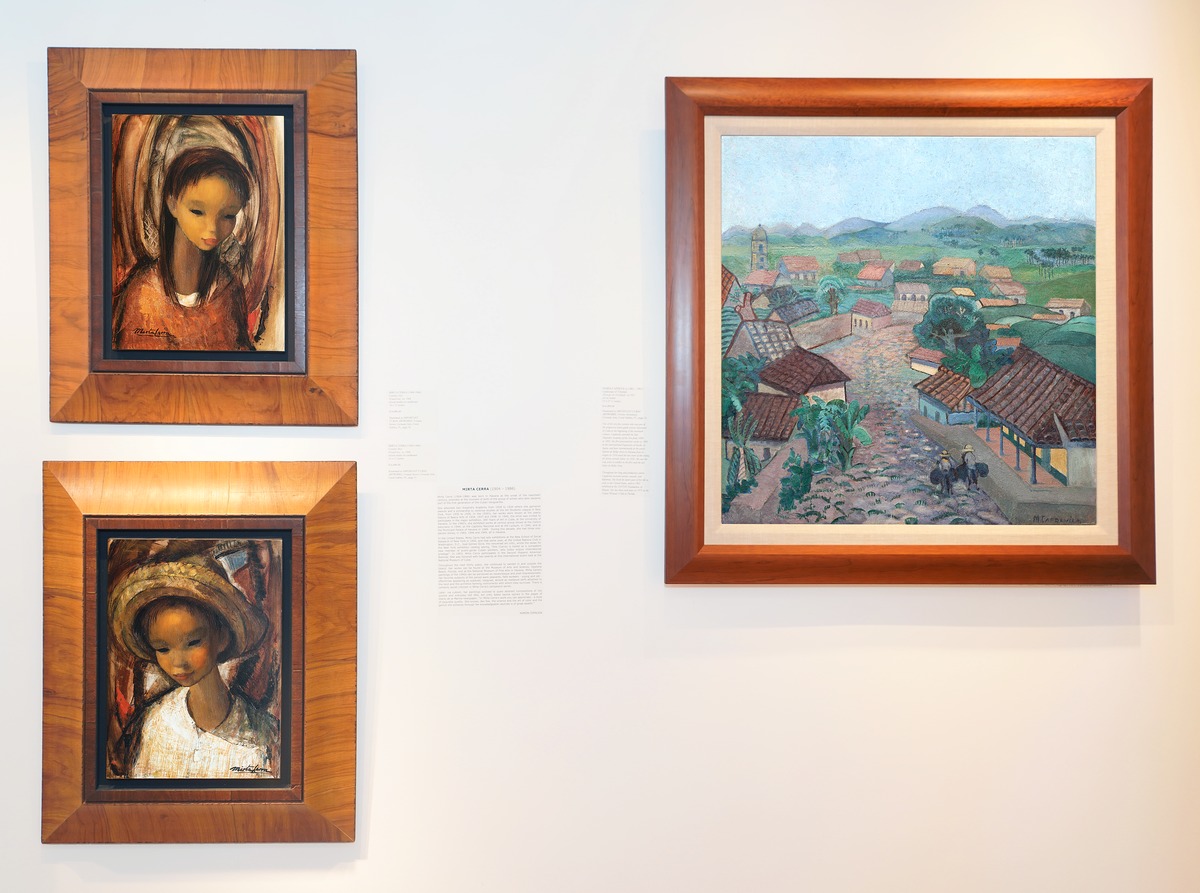 |
Two Mirta Cerra paintings alongside a María Capdevila painting as part of the 100 Years of Creations by 20 Women Artists (1922 to 2022) show.
|
|
MARÍA CAPDEVILA
One of the very few women who was part of the progressive avant garde artistic movement in Cuba at the beginning of the twentieth century, Capdevila attended the San Alejandro Academy of the Arts from 1898 to 1902. She first presented her works in 1905 at the International Exposition of Seville, in Spain, and later intermittently at the yearly Salones de Bellas Artes in Havana from its origins in 1916 until the last event of this entity, the thirty-seventh Salon, in 1956. She was the only artist to exhibit in the first and the last Salon de Bellas Artes.
Throughout her long and productive career, Capdevila received various, awards, and diplomas. She lived the latter years of her life in exile in the United States, and in 1965 exhibited at the CINTAS Foundation, in Miami. Her last show took place in 1975 at the Cuban Woman’s Club in Florida.
-Ramón Cernuda, excerpts from Important Cuban Artworks Volume Seventeen, page 10.
|
|
|
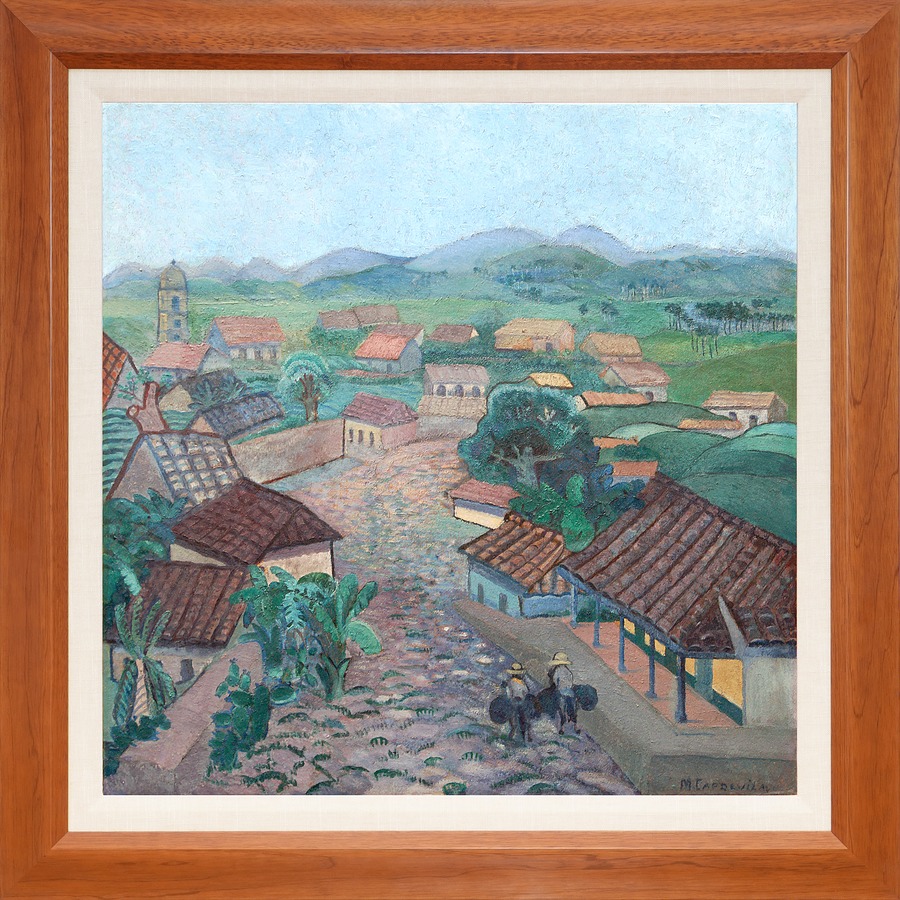 |
María Capdevila (1881 - 1981)
Landscape of Trinidad
(Paisaje de Trinidad) ca. 1921
oil on board
27 x 27 1/2 inches
|
|
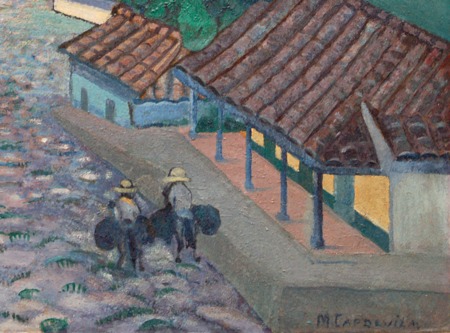 |
Two figures on horseback and a detailed look at the signature.
|
|
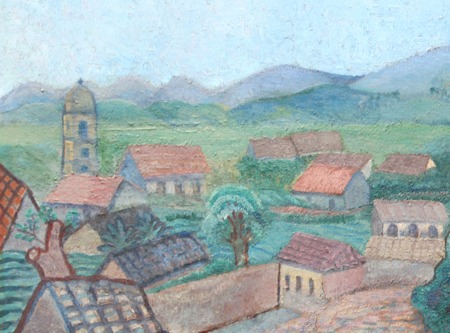 |
Detailed look at the town's bell tower and countryside.
|
|
MIRTA CERRA
Mirta Cerra (1904-1986) was born in Havana at the onset of the twentieth century, precisely at the moment of birth of the group of artists who later became part of the first generation of the Cuban Vanguardia.
She attended San Alejandro Academy from 1928 to 1934 where she garnered awards and a scholarship to continue studies at the Art Students League in New York, from 1935 to 1936. In the 1930’s, her works were shown at the yearly Salons of Beaux Arts of 1934, 1937 and 1938. In 1940, the artist was invited to participate in the major exhibition, 300 Years of Art in Cuba, at the University of Havana. In the 1940’s, she exhibited works at various group shows at the Centro Asturiano in 1944; at the Capitolio Nacional and at the Lyceum, in 1946, and at the Municipal Palace of Havana in 1949. During this decade, she had three one-person shows, in 1943, 1946 and 1949, all in Havana.
(continues below)
|
|
|
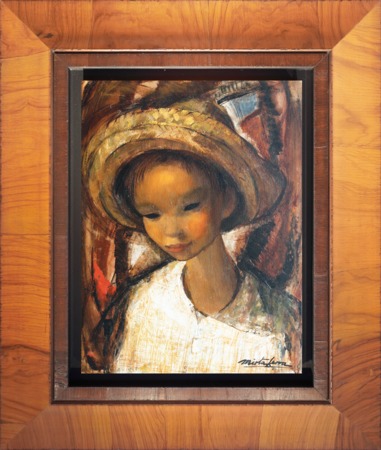 |
Mirta Cerra (1904 - 1986)
Country Boy
(Guajirito) ca. 1946
mixed media on cardboard
16 x 12 inches
|
|
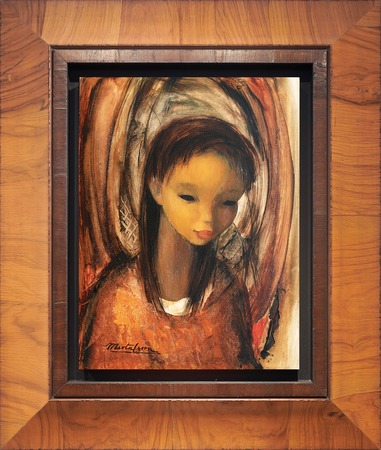 |
Mirta Cerra (1904 - 1986)
Country Girl
(Guajirita) ca. 1946
mixed media on cardboard
16 x 12 inches
|
|
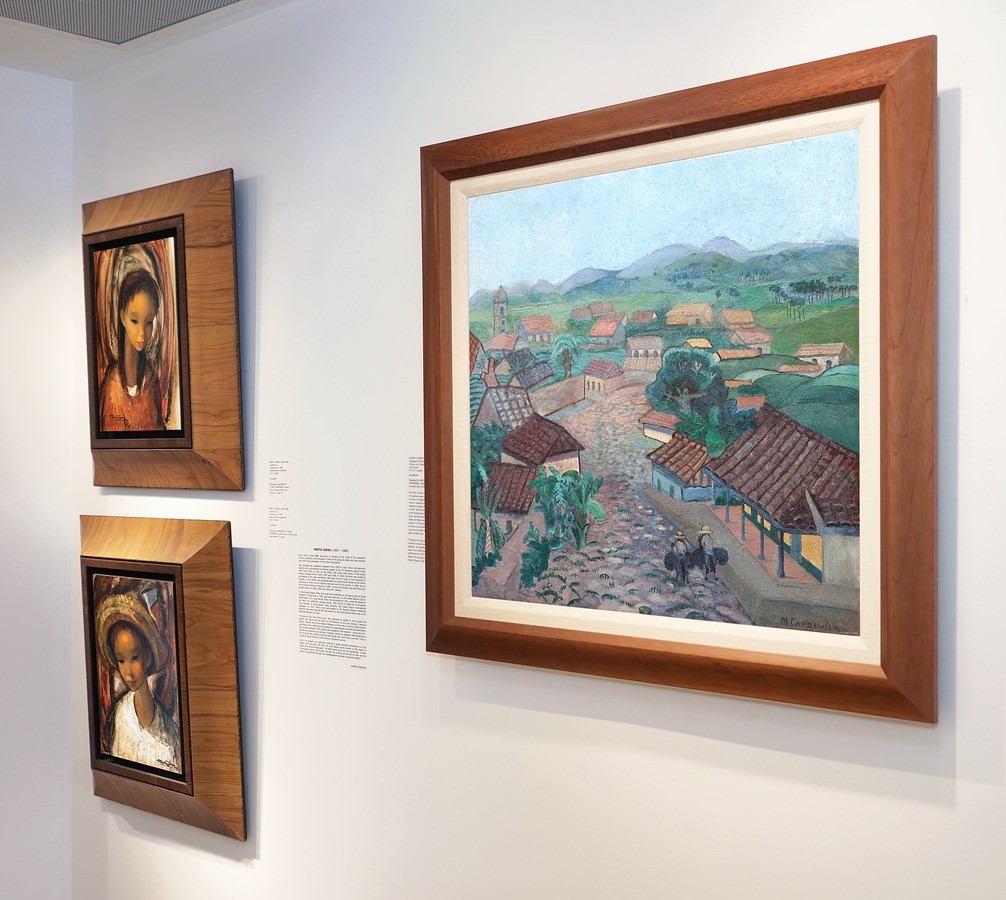 |
An additional hallway view of these three stunning works.
|
|
|
In the United States, Mirta Cerra had solo exhibitions at the New School of Social Research of New York in 1950, and that same year, at the United Nations Club in Washington, D.C., José Gómez Sicre, the renowned art critic, wrote the essay for the New York exhibition catalog saying, “She [Cerra] is hailed as a competent new member of avant-garde Cuban painters, who today enjoys international prestige”. In 1953, Mirta Cerra participates in the Second Hispanic American Biennial. She was honored with two awards at this international event held at the National Museum of Cuba.
Throughout the next thirty years, she continued to exhibit in and outside the Island. Her works can be found at the Museum of Arts and Science, Daytona Beach, Florida, and at the National Museum of Fine Arts in Havana. Mirta Cerra’s paintings of the 1940s can be perceived as cezannesque and post-impressionistic. Her favorite subjects of the period were peasants, field workers - young and old - oftentimes appearing as subdued, resigned, almost as medieval serfs attached to the land and the primitive farming instruments with which they survived. There is certainly social criticism in Mirta Cerra’s campesino series.
-Ramón Cernuda, excerpts from Important Cuban Artworks Volume Seven, pages 30 and 31.
|
|
|
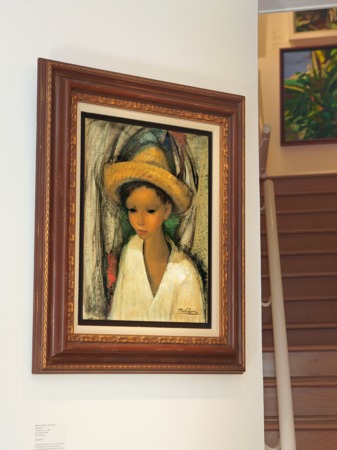 |
Mirta Cerra painting in the staircase entrance. (left)
|
|
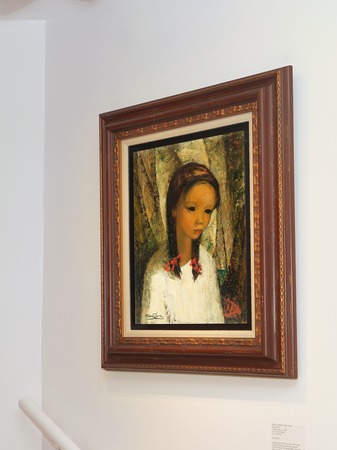 |
Mirta Cerra painting in the staircase entrance. (right)
|
|
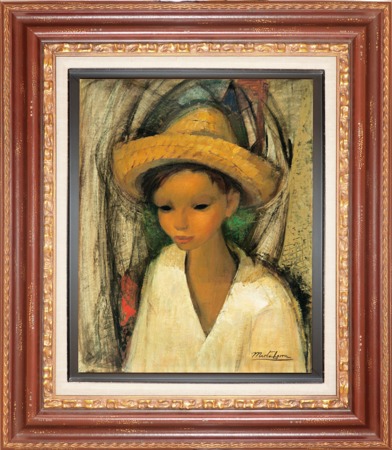 |
Mirta Cerra (1904 - 1986)
Peasant Boy
(Campesino) ca. 1946
oil on canvas board
20 x 16 inches
|
|
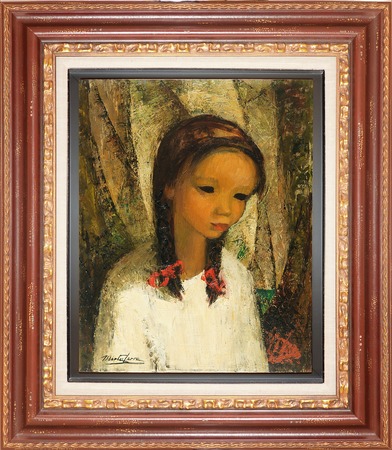 |
Mirta Cerra (1904 - 1986)
Peasant Girl
(Campesina) ca. 1946
oil on canvas board
19 3/4 x 16 inches
|
|
MARÍA PEPA LAMARQUE
“LA MARQUE, María Josefa, Cuban painter born in 1892, Disciple of Romañach, cultivates pastel painting. She has exhibited in almost all national institutions, and also exhibited abroad.”
-Enciclopedia del Arte en América,
Bibliográfica OMEBA,
Buenos Aires, Argentina, 1969.
|
|
|
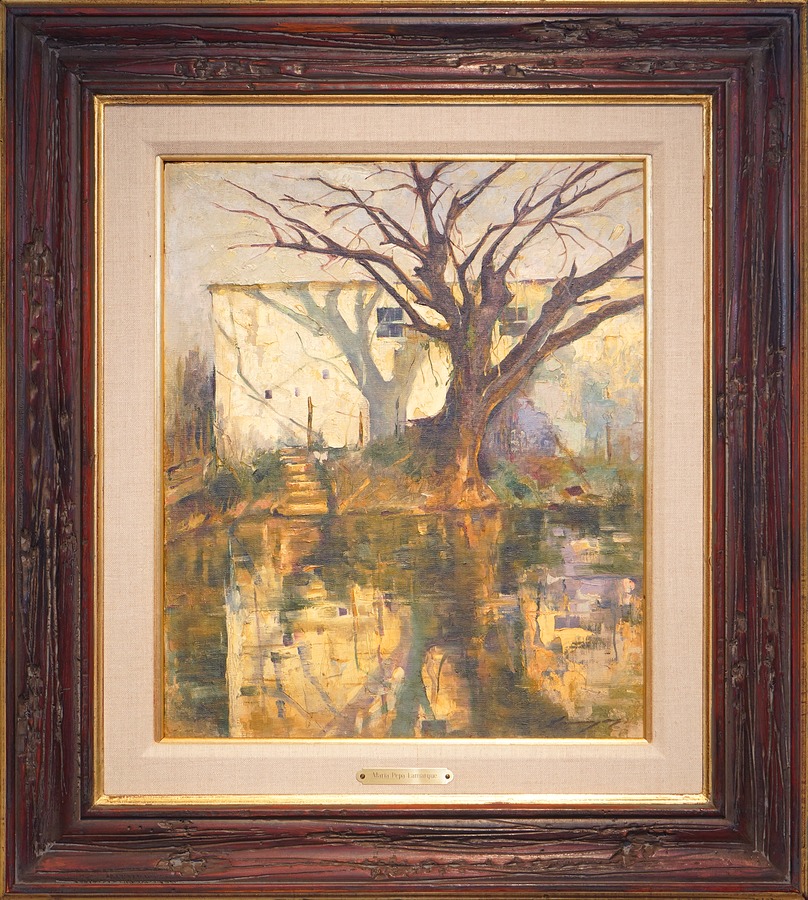 |
María Pepa Lamarque
Large Bridges
(Puentes Grandes), ca. 1923
oil on wood
18 x 16 inches
|
|
Maria Josefa “Pepa” Lamarque was born in Guantánamo in 1892, and was formally trained in painting at the prestigious San Alejandro Academy in Havana, where she learned under the tutelage of Master Painter Leopoldo Romañach. During her schooling, she perfected her celebrated landscape, portrait, and still-life techniques.
In 1924, the year of her graduation, she executed some of her best-known and most representative artworks-- a series of landscape studies of Puentes Grandes, a neighborhood in the municipality of Playa in Havana. One of her Puentes Grandes paintings is in the permanent collection of the Museo Nacional de Bellas Artes in Cuba, the country’s premier museum. That same year, she won a First Place Landscape Prize at the National Academy of Arts and Letters for her painting, Rincón de Puentes Grandes y Rincón Colonial. Also in 1924, she and her colleague and close friend, Amelia Peláez held a two person-show at the Association of Painters and Sculptors in Havana.
Unlike many of the well-known luminaries from the period, Lamarque avoided modernist tendencies and remained committed to a traditional palette and naturalist style. Lamarque continued to exhibit in Cuba for years. In 1974, at 82 years old, she herself curated the final show of her lifetime, titled The Exhibition of Flowers. The artist died in Havana in 1975.
- Nico Hough
|
|
|
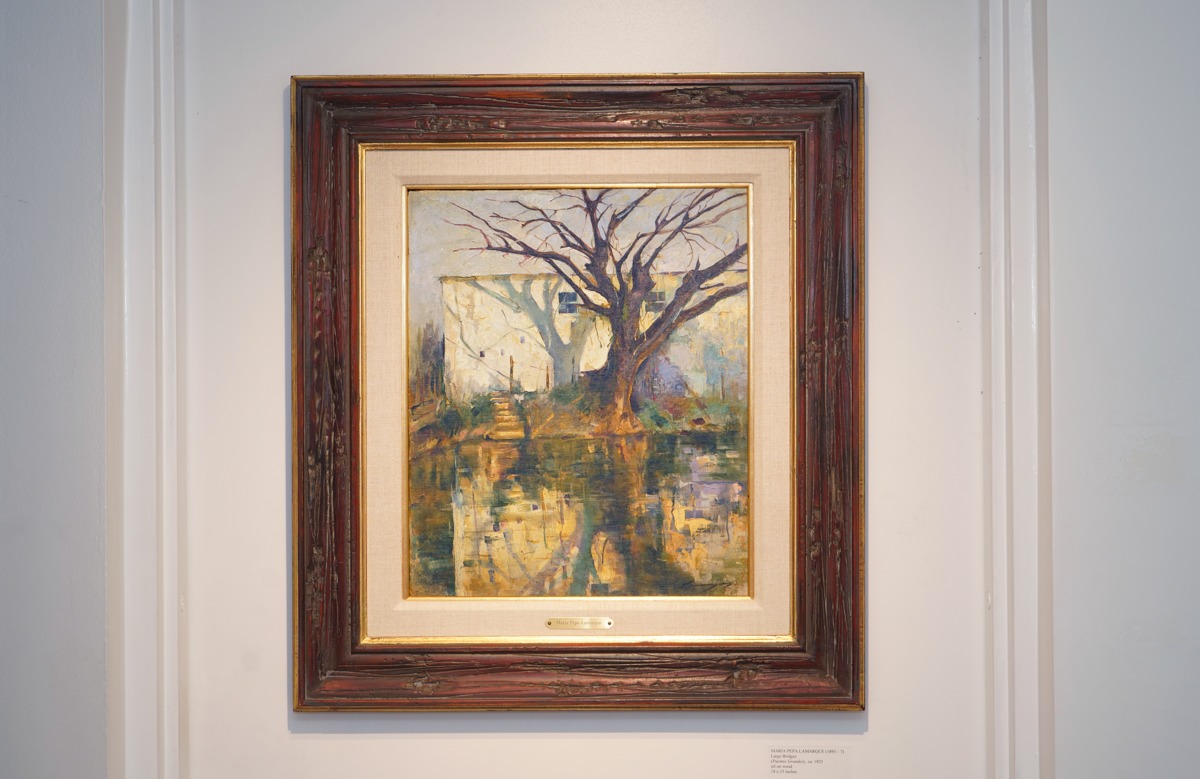 |
María Pepa Lamarque painting located at the end of the upstairs hallway.
|
|
|
| |
| |
| |
| Copyright 2002-2024, Cernuda Arte. All Rights Reserved |
| |
|
| |
